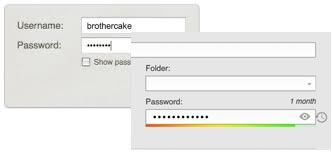生成魔咒
‘We are not our users‘.
“ 我们不是我们的用户 ”。
It’s simultaneously the simplest of ideas, and one of the hardest problems for designer/developers to grapple with.
同时,这是最简单的想法,也是设计师/开发人员需要解决的最困难的问题之一。
For instance, when WE use a fast MacBook Pro running Chrome XXX, and the people working next to us do the same, it’s very easy to forget the world isn’t like that. Sometimes it’s even more subtle than that. Sometimes we’re trained to think differently to our users. I recently had an interesting conversation with Jessica Enders and James Edwards that raised this idea:
例如,当我们使用运行Chrome XXX的快速MacBook Pro,而在我们旁边工作的人们也这样做时,很容易忘记世界并非如此。 有时,它甚至比这更微妙。 有时,我们受过训练,可以对用户做出不同的思考。 我最近与杰西卡·恩德斯(Jessica Enders)和詹姆斯·爱德华兹(James Edwards)进行了有趣的交谈,提出了这个想法:
As we know, the web is crammed with buttons and checkboxes. Jessica’s view is that buttons ‘perform actions’ — perhaps calling an elevator or stopping traffic at a crossing — and checkboxes ‘mark states’ — such as the locked/unlock setting on a bathroom door.
众所周知,Web上挤满了按钮和复选框。 杰西卡(Jessica)的看法是,按钮“执行动作”(例如叫电梯或在十字路口停止交通)以及复选框“标记状态”(例如浴室门上的锁定/解锁设置)。
That certainly makes sense to me.
这对我来说当然很有意义。
As web people commonly using technologies like CSS and JSON, I think we are trained to look at the world as a collection objects with properties and settings.
作为网络人士通常使用CSS和JSON之类的技术,我认为我们受过训练 ,可以将世界视为具有属性和设置的集合对象。
For instance, we might understand an article title as:
例如,我们可能将文章标题理解为:
.title {
color: black;
font-family: Helvetica, sans-serif;
font-size: 24px;
}And, out of habit, we probably also think of our car as:
而且,出于习惯,我们可能还会认为我们的汽车是:
.car {
car-brand: Honda;
color: red;
model: CRX;
transmission: auto;
}I’ve used a CSS-like example here, but it could just as easily be JSON or XML. Even plain ol’ HTML has properties and values.
我在这里使用了类似CSS的示例,但它可能也很容易是JSON或XML。 甚至普通HTML都具有属性和值。
It’s perfectly natural for us to understand our car (or sandwich or shopping list) as an item with a series of settings or states.
对于我们来说,将我们的汽车(或三明治或购物清单)理解为具有一系列设置或状态的项目是很自然的。
And I’d argue that this likely affects the way we build web things.
我认为这可能会影响我们构建Web事物的方式。

‘Show password’ controls can be implemented with buttons or checkboxes.
“显示密码”控件可以通过按钮或复选框来实现。
Here’s an example to think about: Many web and mobile apps that use a password field, also offer a ‘Show password’ control nearby that allows users to mask (make it asterisks) and unmask their password.
这是一个值得考虑的示例:许多使用密码字段的网络和移动应用程序也在附近提供了“显示密码”控件,该控件允许用户屏蔽(将其标记为星号)和取消屏蔽其密码。
There’s a good chance that if you work on the web, you probably think of password visibility as a ‘setting’ associated with the password — as in ‘Show password: yes/no’. And that makes perfect sense as a checkbox, right? It feels right to me, and James had a strong preference for it.
如果您在网络上工作, 很有可能会将密码可见性视为与密码相关联的“设置”,例如“显示密码:是/否”。 作为复选框,这很有意义,对吗? 对我来说感觉不错,詹姆斯对此非常有偏好。

“Passwurdius Revelio!”
“ Passwurdius Revelio!”
So far, in my testing of a small group of non-web people, that’s **not** necessarily how they think. In general terms, they tend to look at ‘unmasking a password’ as an action — almost like Harry Potter casting a spell. That means for these people, it probably makes more sense as a button control.
到目前为止,在我对一小群非网络人士的测试中,这不一定是他们的想法。 一般而言,他们倾向于将“揭露密码”视为一种动作-就像哈利·波特施放咒语一样。 这对于这些人来说,作为按钮控件可能更有意义。
This idea definitely needs more research, but it does raise some interesting questions about the ways that working with computers changes the way our brains work.
这个想法肯定需要更多的研究,但是确实引起了一些有趣的问题,即使用计算机的方式改变了我们大脑的工作方式。
All this time we’ve been telling our computers how to think, they may have been doing the same to us.
一直以来,我们一直在告诉我们的计算机如何思考,他们可能一直在对我们做同样的事情。
翻译自: https://www.sitepoint.com/masking-passwords-magical-incantations/
生成魔咒






















 被折叠的 条评论
为什么被折叠?
被折叠的 条评论
为什么被折叠?








